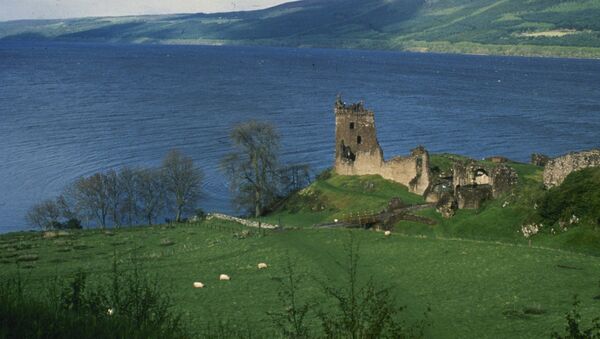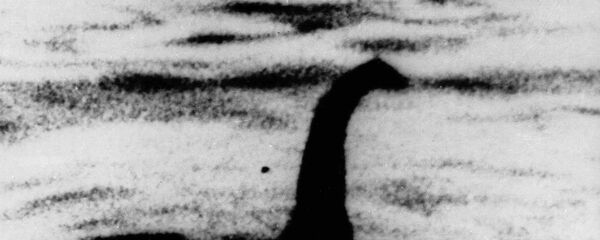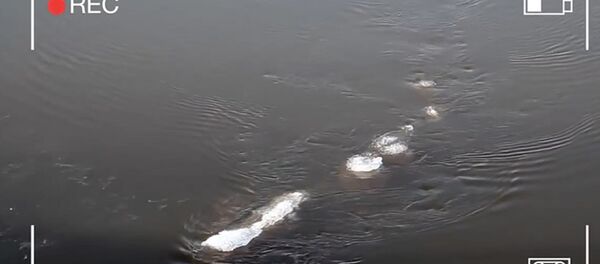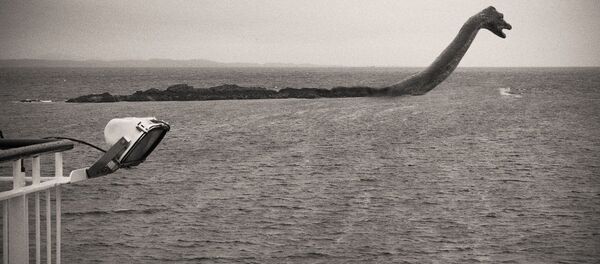The team plans to collect 300 DNA samples from three different depths across the lake to establish the truth about Nessie’s existence. Sputnik discussed the hunt for Nessie’s DNA with one of the team members, Dr Neil Gemmel from the University of Otago in New Zealand.
Neil Gemmel: We’ve just been to the Loch Ness and we’ve collected water samples from up and down the loch and all around it. And our real motivation here is to communicate how we would do this scientifically and the main focus of the study is a biodiversity survey of what is Britain’s largest freshwater body by volume.
And, of course, there’s the added bonus that there’s a monster that has been associated with the loch for about fifteen hundred years, so our idea is that we would describe the life present in Loch Ness in June 2018 and we might find evidence that supports some of the monster sightings that have been made over the years.
Neil Gemmel: Yes, it’s actually quite a low productivity loch system, but it’s deep and it’s big. We’re interested in particular about, and it’s also very dark; that has a lot of tenants in the water which make it hard for light to penetrate so it becomes dark very quickly. So we think it goes from a light-driven photosynthetic system to a chemically-driven bacterial system very quickly.
We think there might be some interesting bacteria in the depths of Loch Ness and we also think that there might be some other interesting species around parts of the loch where we have been. But fundamentally, it should be pretty much like most highland loch systems, but there may be a few differences.
Neil Gemmel: These are two good questions. The [answer to the] first question is that that’s about 20 of us so far involved in the project from the UK, Denmark, France, Australia, the US and New Zealand. And so it’s a big international team and each brings a particular piece of expertise and I’m pretty happy with the collaborative environment we’ve established.
What we’re doing with the eDNA (environmental DNA), it’s not naked DNA floating around in the water, it’s cells that have been lost by organisms or indeed it might be an entire organism intact that we can trap and filter and then extract the DNA from. If you like, I like to think of it as animal dandruff; or you could also think of it as a collection of microscopic organisms that we’re also collecting. So it’s a real mish-mash of biology.
Sputnik: We’re talking about microscopic little bits of animals and pieces and these could be… DNA lasts quite a long time, we’ve found dinosaur DNA and I’m wondering how would you go about filtering this? You would filter it, but how would you be able to tell without sequencing each bit of the DNA that you found, how would you be able to understand that this is a unique sample?
But what we’re doing is, when we collect those filter samples, we’re collecting the biological material from that water sample and then we break it up and we take the sequences of the DNA out.
We effectively then sequence pretty much every molecule that’s present there, representative of the plants, and the fish, and birds, and all the microscopic life that’s present in that water sample. So it’s incredibly powerful for describing our natural world and, as I said, it was one of the primary motivations to show the power of this technique for understanding a natural world in a new way.
And Loch Ness seems like a very good example to do that because there’s supposedly a monster there and almost every person in the world seems to have heard of Loch Ness so it was a natural way to generate interest in a project which, if it were done anywhere else in the world, probably wouldn’t have attracted that level of attention.
Neil Gemmel: I’m not that passionate about the idea of a monster, I don’t think I believe there is one; I’m open to the idea that I might be wrong. So what I think we’ll do, we will describe life in Loch Ness in 2018 pretty well, so we’ll know about the fish and the plants and the animals, other animals that live there in quite excruciating detail and we might find some evidence that supports some of these ideas that’ve been put forward about the monster myth.
The most extraordinary of these is the plesiosaur idea, we can test that. We can test the giant catfish hypothesis, we can test the idea there might be sturgeon present in the loch and other species. And I think again that’s part of the journey we want to take people on; how do we go about testing scientific hypothesis about the observations that people have reported over many years now. Last year was the highest number of sightings ever reported of the Loch Ness monster or whatever it might be.
Sputnik: Do you think that through this research, through this very careful screening and filtration of the water and the collection of all these molecules, you’ll be able to effectively scientifically rule out the fact that there’s a Loch Ness monster when you complete your study?
Neil Gemmel: No, because we can prove what we can prove. If we find evidence of sequences unusual to science that would perhaps explain the Loch Ness monster myth, well, that would be an enormous thing; that would be scientifically huge. What we’re more likely to find is evidence of all the species that we thought were, plus a few more, and no traces of DNA that support any kind of monster myth, whether it be a giant fish or a plesiosaur. I suspect that’s our most likely outcome. And if that’s what we find, that’s a negative result and there could be multiple reasons why we get a negative result.
It may be that there is no monster, but we can’t prove that, or we can prove that we were unable to find evidence of it and unfortunately it’s very difficult to prove a negative: the absence of evidence is not evidence of absence. So it might be that if there was a monster, we just didn’t sample water anywhere near where it had been over the last week or so or there may be other explanations.
Neil Gemmel: Yes, there’s been much more interest in the project as a consequence of its location than if we’d done it in any other English or European waterway. One of the things that’s really been nice about this is that public support has been good, media interest has been very high and we’ve had an awful lot of opportunity to talk about the science of environmental DNA in a way that has exposed it to the public in a greater way than any previous study and there’ve been some pretty many studies done.
So I think that’s part of it and yes, we have had some commercial sponsorship as a consequence of the media interest and the buzz that’s been generated around the project. And I think there’re a couple of things that we’re excited about; we think there’s a great way to continue to communicate science using these popular ideas or myths as a lever of public interest and public engagement and that’s been something I’ve been very keen on.
And the other thing that’s kind of neat about this is that the Loch Ness project actually ties into some major European scientific initiatives – it turns out that there’s a big study on what makes a healthy lake system in the UK that’s funded by environmental protection agencies, and Loch Ness hadn’t been studied, but now we’re doing that and we can tie our work into that; likewise, this work on migratory fish all throughout Europe.
The views expressed in this article are those of Neil Gemmel and do not necessarily reflect those of Sputnik.






